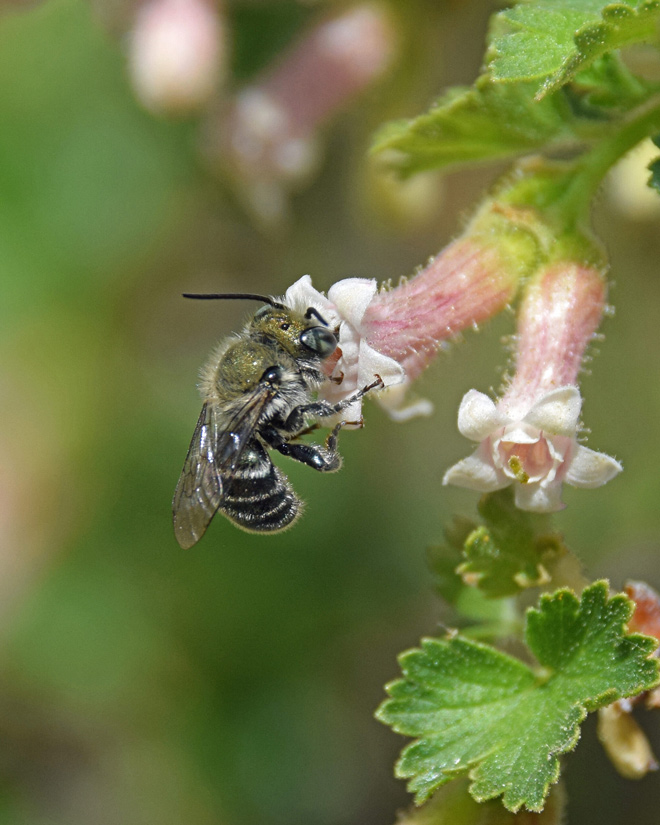Some of the first early blooming native flowers in Colorado include shrubs in the Currant family.
It is middle April as I write this, and strong wind whips with intensity across the San Luis Valley. As the soil continues to warm, the roots of perennial native plants and shrubs once again begin to transport precious nutrients and water to dormant tissues. Leaves begin to form, turn green, and make sugar via photosynthesis using sunshine, water, and carbon dioxide. The reproductive parts, (often what we call flowers), begin to develop and show off their attractive colors, shapes, delicious smells, and tasty nectar for all kinds of pollinators who are also waking up. Bees, butterflies, moths, flies, beetles, birds are the main pollinators in North America. Pollinators transfer sex cells, (pollen), from flower to flower, and plant to plant. The pollen and nectar serve as essential food for pollinators, and unknowingly random pollen gets plopped onto the stigma, or female plant part within a flower.
Subsequently multicellular zygotes form and develop into fruit and seeds of all types and forms. Humans would be in trouble without the pollinators! Some of the first early native bloomers attracting pollinators in the San Luis Valley include shrubs in the Currant family- Grossulariaceae, which are not related to the currants we buy at the grocery store. The genus Ribes, including currant, (unarmed or no thorns), and gooseberry, (armed or has thorns). Colorado is home to at least thirteen species of current and gooseberry shrubs, and there are approximately 8-10 Currant/Gooseberry shrubs in the San Luis Valley. Two common species include Trumpet gooseberry- Ribes leptanthum, and Wax Current- Ribes cereum.
Everybody loves the native currants!
The minute these shrubs begin to bloom, a careful observation will reveal several native bees, butterflies, and moths nectaring at the trumpet shaped flowers. I have even seen hummingbirds sipping nectar and perching on the shrubs. Later in the summer when the flowers turn to currants, neotropical migrant birds, such as Western tanager, and hermit thrush feast on the delicious abundant fruit. Indigenous People also collected and dined on these berries either fresh off the shrub or dried for later use.
The roots and bark are used for all kinds of medicinal uses. “The Navajo used the woody stems of gooseberry to make arrow shafts, and the roots were pounded with juniper roots and rose roots to be woven into cordage” (From IWIGARA the Kindship of Plants and People by Enrique Salmon). These shrubs are excellent for a native landscape, and they are available at nurseries in Salida and Colorado Springs. (And all across Colorado) If you are wanting a specific native plant or shrub for your landscape, make sure you ask to see the Latin name. I would call nurseries before you go and ask if they sell the native plant you desire. I let the spiny or armed shrubs, (trumpet gooseberry), grow all around my home here in Crestone. I plant the unarmed wax currants in my native garden where I often work pulling weeds, and do not want the painful spines getting in my way!
As you read this it is [July], and hopefully the winds have subsided, and many other lovely plants are in full bloom. Look for golden banner, evening primrose, Indian paintbrush, service berry shrub and many more.
Carol English
President, San Luis Valley Chapter
Colorado Native Plant Society
Reprinted with permission from Carol and:
The Crestone Eagle



